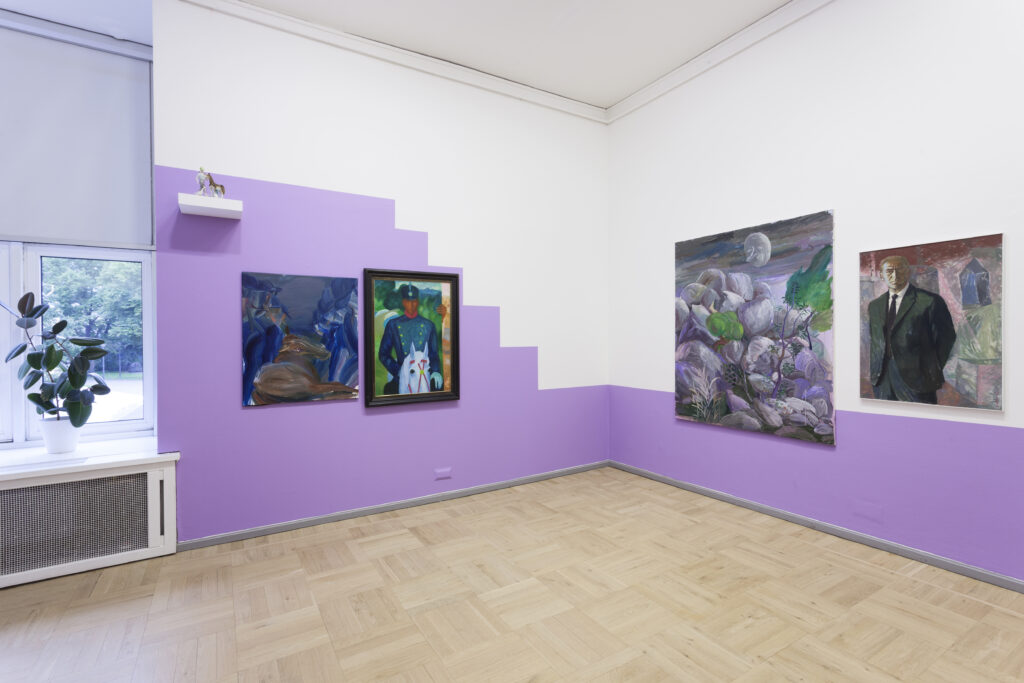Nazim Ünal Yilmaz
School Walls: Links of a Chain
2020

This room is a newly commissioned painting installation by Nazim Ünal Yilmaz in which he is both artist and curator. The room is an exhibition between himself and Olev Subbi: two painters in dialogue.
School Walls refers to the educational diagrams often found in classrooms, which he likens to both the painted image and to the pedagogical structure of schools of painting. For Yilmaz and Subbi, painting is a way of creating worlds as well as analysing and improving their realities through it. Links in a Chain refers to Subbi’s role as an exhibition organiser towards the end of his career. In 2013, Olev Subbi designed an exhibition titled Four Links in a Chain: Laikmaa, Mägi, Vabbe, Kits in which he elaborated on the development of influential and contemporary artists in the creation of Art History.
Although Yilmaz’s perspective is geographically and personally distant from that of Subbi’s, there are parallel resonances in their painting processes and interests. Both reference historical painting compositions and the logic of colour and form. Colour is a main component in both painters’ works: Yilmaz lives with a slight colour-blindness that produces a recognisable purple and blue tint to his landscapes, compared to Subbi’s expected green fields and yellow crops.
One of the walls has a special focus on the subject of the horse. In Subbi’s Man with a White Horse, Yilmaz viewed the depiction of the horse as a statement of respect and admiration. The eyes of the horse look out towards the spectator communicating wisdom. Using a trompe-l’oeil, Subbi unmasks a harvest landscape behind. Yilmaz often uses animals as a reference to mistreatment in contemporary society and to expose the continuous exploitation of the world around us. He responds with the painting Untitled (Blue Painting with a Little Horse).
The sense of veiling in Subbi’s painting offers the possibility of parallel realities expressed in painting. Yilmaz’s canvases share this intention, but from the perspective of his biography and the queer perspective in a Muslim country. Historically, as well as in contemporary queer culture, remote natural locations have been used as “cruising” sites where lovers meet for prohibited brief encounters. The natural setting is used as a buffer and a veil against the surveillance of society. It is also in this hidden world, far away from the city, that Subbi places his anonymous characters.